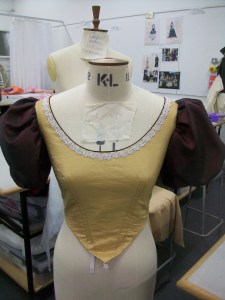For our Final Major Project next year we get to choose our own texts, themes and era which is so exciting, if not a little daunting to think of how much work it will entail.
I have been living the high life this year; with no one to say I am doing something wrong or chasing me up for more work. I have been able to let me imagination flow and able to do whatever I want, go where I am drawn. So, yes, I am apprehensive about next year but the prospect of doing my own thing is really keeping me going.
……….
So far I have a few interesting ideas bubbling around in my brain – they are all books, not sure why, but since I love reading, my bookshelf was my first port of call. There are some old favourites in this collection but I have also been drawn to particular styles of writing and stories which have captured my imagination – and this is as good a place as any to write down my thoughts on the potential projects, and just smooth out some ideas before I start properly planning my pitch and research to my tutors.
~ ~ ~ ~
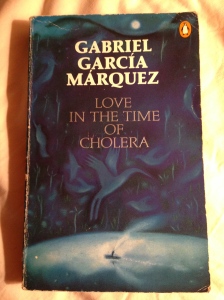 ‘Love In The Time Of Cholera’ by Gabriel Garcia Marquez is an old family favourite, the beautiful way the stories are written and intertwine, the feelings portrayed through sumptuous words and the gorgeous descriptions have made me want to research more about the history behind Marquez’s novel. There has been a film version made already but I feel it could easily be made into another one as there is so much to draw from. Additionally, since this is set in a fictional town in the Caribbean it would allow me to research into different cultures and fashions but also to be creative and imaginative because there is no reason to say exactly what they would have worn. Set around the turn of the century, I can really imagine this strange mix of cultures and clashing fashions, especially after the main lady returns from a honeymoon in Europe. After rereading this fabulous novel I would love to turn it into an opera – there is certainly a strong atmosphere of tragedy, of melancholia and fear throughout which contrast with the elated passions and different loves portrayed. This perfect juxtaposition often approached through operatic means and I feel this story could only benefit from that sort of injection. I want to do something nice, some thing beautiful, some thing poetical.
‘Love In The Time Of Cholera’ by Gabriel Garcia Marquez is an old family favourite, the beautiful way the stories are written and intertwine, the feelings portrayed through sumptuous words and the gorgeous descriptions have made me want to research more about the history behind Marquez’s novel. There has been a film version made already but I feel it could easily be made into another one as there is so much to draw from. Additionally, since this is set in a fictional town in the Caribbean it would allow me to research into different cultures and fashions but also to be creative and imaginative because there is no reason to say exactly what they would have worn. Set around the turn of the century, I can really imagine this strange mix of cultures and clashing fashions, especially after the main lady returns from a honeymoon in Europe. After rereading this fabulous novel I would love to turn it into an opera – there is certainly a strong atmosphere of tragedy, of melancholia and fear throughout which contrast with the elated passions and different loves portrayed. This perfect juxtaposition often approached through operatic means and I feel this story could only benefit from that sort of injection. I want to do something nice, some thing beautiful, some thing poetical.
~ ~ ~ ~
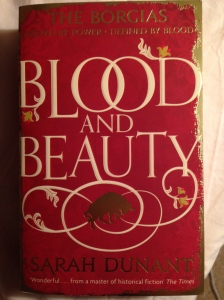 ‘Blood and Beauty’ by Sarah Dunant is a historical novel, inspired by tales of the Borgia family and their rise to power in Italy in the 14th Century. Similar to Mantel’s work, she draws on fact to inspire fictitious scenes showing another side of the Borgias and the way history has been told. I love the era and the fact that it is set in a different country will give me more to research. Italy is such a gorgeous country; there will be lots of inspiration to be taken from the architecture as well. I know there has been a TV series about the Borgias but I think I would want to make a historically accurate film, possibly just focusing on their rise to power because it could go on and on, there is so much to use and draw upon. The gorgeously rich fabrics would give me a chance to develop my embroidery skills and use different materials together to create the look of expensive garments. The director would have to be someone who could command this gripping and exciting atmosphere but who also understands the benefit of understatedness, simplicity and misdirection…?
‘Blood and Beauty’ by Sarah Dunant is a historical novel, inspired by tales of the Borgia family and their rise to power in Italy in the 14th Century. Similar to Mantel’s work, she draws on fact to inspire fictitious scenes showing another side of the Borgias and the way history has been told. I love the era and the fact that it is set in a different country will give me more to research. Italy is such a gorgeous country; there will be lots of inspiration to be taken from the architecture as well. I know there has been a TV series about the Borgias but I think I would want to make a historically accurate film, possibly just focusing on their rise to power because it could go on and on, there is so much to use and draw upon. The gorgeously rich fabrics would give me a chance to develop my embroidery skills and use different materials together to create the look of expensive garments. The director would have to be someone who could command this gripping and exciting atmosphere but who also understands the benefit of understatedness, simplicity and misdirection…?
} Having read other books and stories I know feel that this story has been pushed into the background a tad, and when reflecting on this gripping historical novel, I feel some of the other ones I have given as examples are much more gritty, deep and exciting for me in terms of research – perhaps it is because they are too well-known a historical figures for me to allow my imagination to be let loose…as much as I enjoyed the read, I feel I would be restricted with the designing due to the history.
~ ~ ~ ~
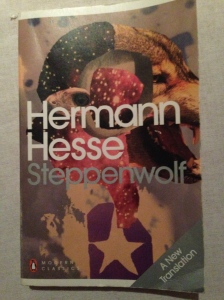 ‘Steppenwolfe’ written by Herman Hesse takes the reader on a psychological journey, following the protagonist as he wrestles with the wolf inside him – a fantastically dazzling novel, typical of the time and Hesse’s philosophical work. I love it and think the story could be excellent performed as a ballet because this for would show the physical and mental conflict in the minds of the characters. It would have to be dark and mysterious, not unlike the Don Juan ballet I researched last year – physical theatre, simple costumes and expressive. It would be exciting and interesting to set this piece out of comfort zones – the contrast with Harry Haller and his alter ego would be vicious, dark and shocking. There could be some bold textures going on throughout the cast, contrasting colours to make it visually interesting and conflicting…almost trying to create Haller’s mind for the audience to see and be immersed in. I suppose it would be great if I could get a placement at the Northern Ballet to help me understand more about how dance productions work…
‘Steppenwolfe’ written by Herman Hesse takes the reader on a psychological journey, following the protagonist as he wrestles with the wolf inside him – a fantastically dazzling novel, typical of the time and Hesse’s philosophical work. I love it and think the story could be excellent performed as a ballet because this for would show the physical and mental conflict in the minds of the characters. It would have to be dark and mysterious, not unlike the Don Juan ballet I researched last year – physical theatre, simple costumes and expressive. It would be exciting and interesting to set this piece out of comfort zones – the contrast with Harry Haller and his alter ego would be vicious, dark and shocking. There could be some bold textures going on throughout the cast, contrasting colours to make it visually interesting and conflicting…almost trying to create Haller’s mind for the audience to see and be immersed in. I suppose it would be great if I could get a placement at the Northern Ballet to help me understand more about how dance productions work…
~ ~ ~ ~
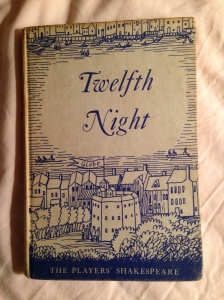 I would love to produce a Shakespeare play – I have always been incredibly fond of his plays and poetry but I have not found one which I feel I could put my heart and soul into and make it original – I feel more reading and research behind some of the stories is necessary before I can make a proper judgement or proposal. I have always loved ‘Twelfth Night’ because it was the first Shakespeare play I read, however, I really do not like the idea of bringing the story, or any of his tales for that matter, up to date. I feel it would take away from the original meanings written in to the heart of his yarns. Nothing could beat Baz Lurhman’s modern ‘Romeo and Juliet’, so why try!? Perhaps a historically accurate Shakespearian play would be good to produce – meticulously detailed and rich. Especially since I am to be honoured with a placement at RSC, I might be able to get some inside detail and inspiration…
I would love to produce a Shakespeare play – I have always been incredibly fond of his plays and poetry but I have not found one which I feel I could put my heart and soul into and make it original – I feel more reading and research behind some of the stories is necessary before I can make a proper judgement or proposal. I have always loved ‘Twelfth Night’ because it was the first Shakespeare play I read, however, I really do not like the idea of bringing the story, or any of his tales for that matter, up to date. I feel it would take away from the original meanings written in to the heart of his yarns. Nothing could beat Baz Lurhman’s modern ‘Romeo and Juliet’, so why try!? Perhaps a historically accurate Shakespearian play would be good to produce – meticulously detailed and rich. Especially since I am to be honoured with a placement at RSC, I might be able to get some inside detail and inspiration…
} At the moment, I am leaning slightly away from the idea of studying a Shakespeare play for my final project, simply because I love them so much I would not able to choose one which I could give my all to without the fear of ruining it in my mind – also, I feel they have been a little over done in the past…perhaps leaving them in the glory they were written in is best for me at the moment – but I refuse to rule it out completely!
~ ~ ~ ~
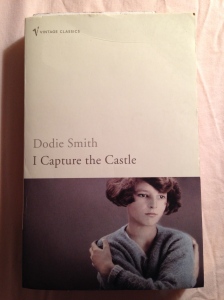 ‘I Capture The Castle’ by Dodie Smith is an innocent, sweet yet gripping novel set in the 1930s. The way it is written draws the reader in and I could hardly bare to put it down because I knew something else was going to happen. It tells the story of an interesting family living in an old castle and what happens to them – it’s a kitchen sink drama and very lovely! I think there could a be a lot of scope with contrasting the fashion of that period with the fantastical twist Cassandra puts on her world – I would not necessarily be tied down by conventional costumes as this is not a conventional family; they are poor but proud and therefore their outfits would affected and odd but fun! There is also a medieval feel to the story (possibly since they live a castle!) but this could be brought through to emphasise their eccentric-ness and individual-ness.
‘I Capture The Castle’ by Dodie Smith is an innocent, sweet yet gripping novel set in the 1930s. The way it is written draws the reader in and I could hardly bare to put it down because I knew something else was going to happen. It tells the story of an interesting family living in an old castle and what happens to them – it’s a kitchen sink drama and very lovely! I think there could a be a lot of scope with contrasting the fashion of that period with the fantastical twist Cassandra puts on her world – I would not necessarily be tied down by conventional costumes as this is not a conventional family; they are poor but proud and therefore their outfits would affected and odd but fun! There is also a medieval feel to the story (possibly since they live a castle!) but this could be brought through to emphasise their eccentric-ness and individual-ness.
} This has become one of my all time favourite novels…ever…I mean, I hated the idea of it ending and the characters leaving my life, especially because it was so true to life, so perfect for those people in the pages, almost too perfect! Possibly because I like it so much, I am less inclined to study it for my final year project in case I end up ruining it for myself. Or perhaps I could really enjoy it but I feel in my gut that there is not enough grit and originality in the book to sponge a whole year out of it…I think this one needs a bit more thought put into it…
~ ~ ~ ~
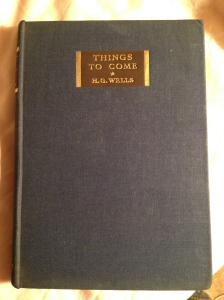 ‘Things To Come’ by H.G. Wells was written in the style of a film script, based on ‘The Shape of Things to Come’ (an earlier novel) which is a look into the future for mankind and the things which may come to test us. It is futuristic but, as Wells states in the Introduction and his letter to his creative team, believable, splendid, and beautiful. He is quite specific about things he does and does not want to see his characters wearing – which could help me a lot when it comes to designing as it will be like having a director there; Wells says ‘people will not be plastered over with gadgets…carry the equivalent of a purse, pocket book, fountain pen, watch, etc…unobtrusive…they will not wear costumes of cellophane illuminated by neon lights’ by this we can see he wants to take a realistic approach to the future. He also says ‘I anticipate the costume, broad on the shoulders and fine about the legs and feet, with a fairly simple coiffure, more reminiscent of “Tudor” style…fine materials we want but not extraordinary materials’ this simple idea could make this into a really fab film as it would be a different take on the future of our race and since it is slightly based on historical costumes I think I would be alright with these silhouettes to base my designs on. Wells has a clear idea for his main character, Cabal, ‘I want a white or silver costume of very pure material…a fine gentleman, not a padded lunatic or an armoured gladiator’, he also suggested that cloaks would not be ineffective, additionally, long skirts for the women would be aesthetically pleasing for the dramatic new world.
‘Things To Come’ by H.G. Wells was written in the style of a film script, based on ‘The Shape of Things to Come’ (an earlier novel) which is a look into the future for mankind and the things which may come to test us. It is futuristic but, as Wells states in the Introduction and his letter to his creative team, believable, splendid, and beautiful. He is quite specific about things he does and does not want to see his characters wearing – which could help me a lot when it comes to designing as it will be like having a director there; Wells says ‘people will not be plastered over with gadgets…carry the equivalent of a purse, pocket book, fountain pen, watch, etc…unobtrusive…they will not wear costumes of cellophane illuminated by neon lights’ by this we can see he wants to take a realistic approach to the future. He also says ‘I anticipate the costume, broad on the shoulders and fine about the legs and feet, with a fairly simple coiffure, more reminiscent of “Tudor” style…fine materials we want but not extraordinary materials’ this simple idea could make this into a really fab film as it would be a different take on the future of our race and since it is slightly based on historical costumes I think I would be alright with these silhouettes to base my designs on. Wells has a clear idea for his main character, Cabal, ‘I want a white or silver costume of very pure material…a fine gentleman, not a padded lunatic or an armoured gladiator’, he also suggested that cloaks would not be ineffective, additionally, long skirts for the women would be aesthetically pleasing for the dramatic new world.
“For God’s sake let yourselves go” but remember, fine clothes, please; not nightmare stuff, not jazz…being inventive and original is not being extravagant and silly. Fine clothes and dignified clothes, please, for this new world’ – this feels to me as if Wells has an almost too clear a view of what the world should be like and this film is his way of bringing it to life – does he despise this world so much that he has to create another one? Or can he simply see a brighter future for us?
~ ~ ~ ~
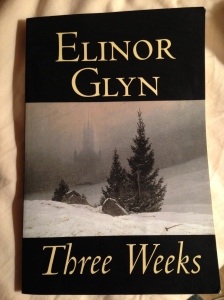 ‘Three Weeks’ by Elinor Glyn is a fairly unknown novel by a forgotten writer but famous of her time – the mistress of a lord who had time on her hands but the outcome is this beautiful love story in which we follow a pair of star-crossed lovers across Europe to escape who is tracking them. We are drawn into the beauty of the landscapes and the intrigues of the people involved with this love affair – they all seem very real when one reads Glyn’s work. It would make a truly lovely film, a tragic costume drama with thrills and romance – set in the early 1900s against stunning modern and exciting scenery, the costumes would be sumptuous, elegant and full of characteristic detail – a bit like the modern Anna Karenina film. And completely capture that era’s grace and luxury for the upper classes.
‘Three Weeks’ by Elinor Glyn is a fairly unknown novel by a forgotten writer but famous of her time – the mistress of a lord who had time on her hands but the outcome is this beautiful love story in which we follow a pair of star-crossed lovers across Europe to escape who is tracking them. We are drawn into the beauty of the landscapes and the intrigues of the people involved with this love affair – they all seem very real when one reads Glyn’s work. It would make a truly lovely film, a tragic costume drama with thrills and romance – set in the early 1900s against stunning modern and exciting scenery, the costumes would be sumptuous, elegant and full of characteristic detail – a bit like the modern Anna Karenina film. And completely capture that era’s grace and luxury for the upper classes.
} On reflection, I think this is the one I most likely not to present because although I adore the story, the characters and cloud-like feeling of love and happiness but also reality I get what I read it, I do not feel there are enough interesting aspects which are original and unique enough for me to spend a whole year researching and designing for it – therefore, I will keep this novel to myself, to my bookshelf and to my heart.
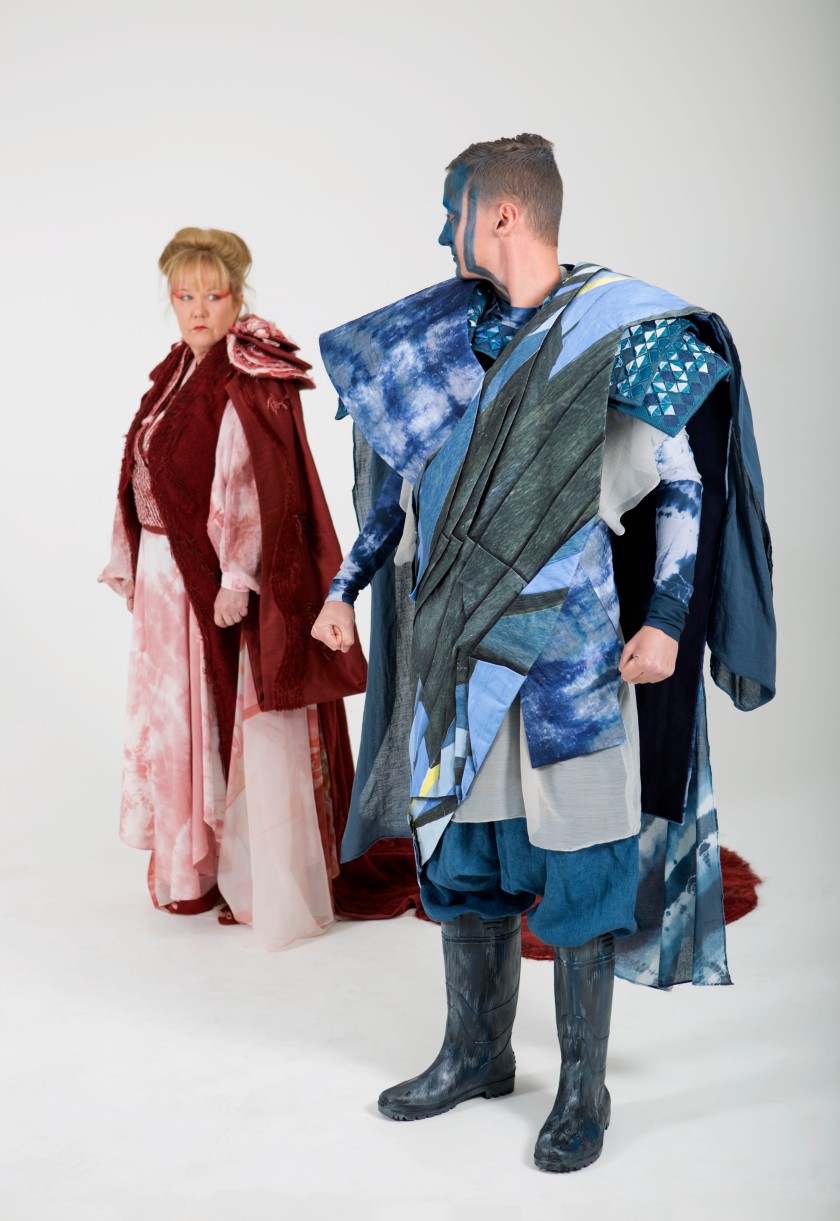























 is is what I had been waiting for since first year! I chose to make Oberon’s because I have never really made anything for a man before and thought it would be fun to have a go at tailoring.
is is what I had been waiting for since first year! I chose to make Oberon’s because I have never really made anything for a man before and thought it would be fun to have a go at tailoring. I had made the toiles for each item of the costume I organised a fitting with Alex to see how it fitted him and where the shape needed editing and altering. It was so exciting to see the calico come to life when put on! Once I had made the alterations and documented the changes on the patterns, I could move on to the main fabric which had to be dyed and embroidered with my designs and chosen colours. The most tricky aspect was dying 3 meters of white cotton drill to the shade of dirt blue which I wanted – I spent a lot of time in the dye lab and had to leave the fabric in the tub for ages to get the deep blue – in the end it did not matter as much as I had first thought because I used heat sublimation to transfer one of my drawings onto the fabric which actually made the fabric darker so I finally got the shade I desired by accident!
I had made the toiles for each item of the costume I organised a fitting with Alex to see how it fitted him and where the shape needed editing and altering. It was so exciting to see the calico come to life when put on! Once I had made the alterations and documented the changes on the patterns, I could move on to the main fabric which had to be dyed and embroidered with my designs and chosen colours. The most tricky aspect was dying 3 meters of white cotton drill to the shade of dirt blue which I wanted – I spent a lot of time in the dye lab and had to leave the fabric in the tub for ages to get the deep blue – in the end it did not matter as much as I had first thought because I used heat sublimation to transfer one of my drawings onto the fabric which actually made the fabric darker so I finally got the shade I desired by accident!

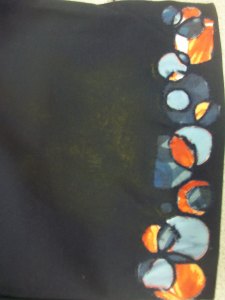

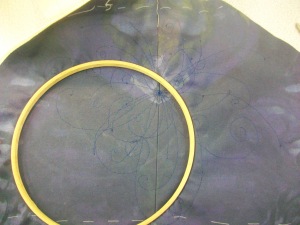

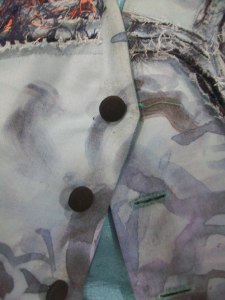
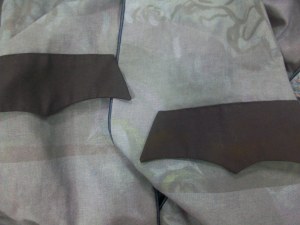




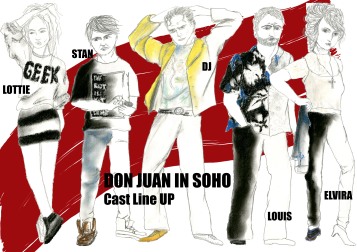 it very well together, the subtle, dulled colours and different styles show the character’s individual personalities. I am very pleased with the outcome of my work and think I was able to achieve an essence of Tarantino’s style and work to the brief which allowed my imagination to lead my designs.
it very well together, the subtle, dulled colours and different styles show the character’s individual personalities. I am very pleased with the outcome of my work and think I was able to achieve an essence of Tarantino’s style and work to the brief which allowed my imagination to lead my designs.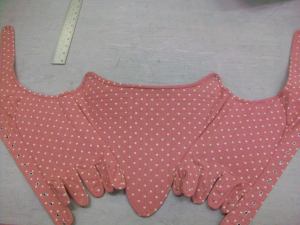
 seen one of garments on an actress! There were a few tweaks and adjustments to make the corset fit properly and then I started on the top fabric, seen above. The end product looks neat and fits like a glove which I was very proud of; and the piping around the edges gives the corset a beautiful, authentic finish.
seen one of garments on an actress! There were a few tweaks and adjustments to make the corset fit properly and then I started on the top fabric, seen above. The end product looks neat and fits like a glove which I was very proud of; and the piping around the edges gives the corset a beautiful, authentic finish. and the awkwardly shaped channels they needed to fit into. There was quite a lot of pushing and shoving to get them in place; due to the thinness of the calico the bones often pierced through and needed stitching up again! However, as you can see, the shape is authentic and effective so I am very pleased with them and the way the two items work together.
and the awkwardly shaped channels they needed to fit into. There was quite a lot of pushing and shoving to get them in place; due to the thinness of the calico the bones often pierced through and needed stitching up again! However, as you can see, the shape is authentic and effective so I am very pleased with them and the way the two items work together.

